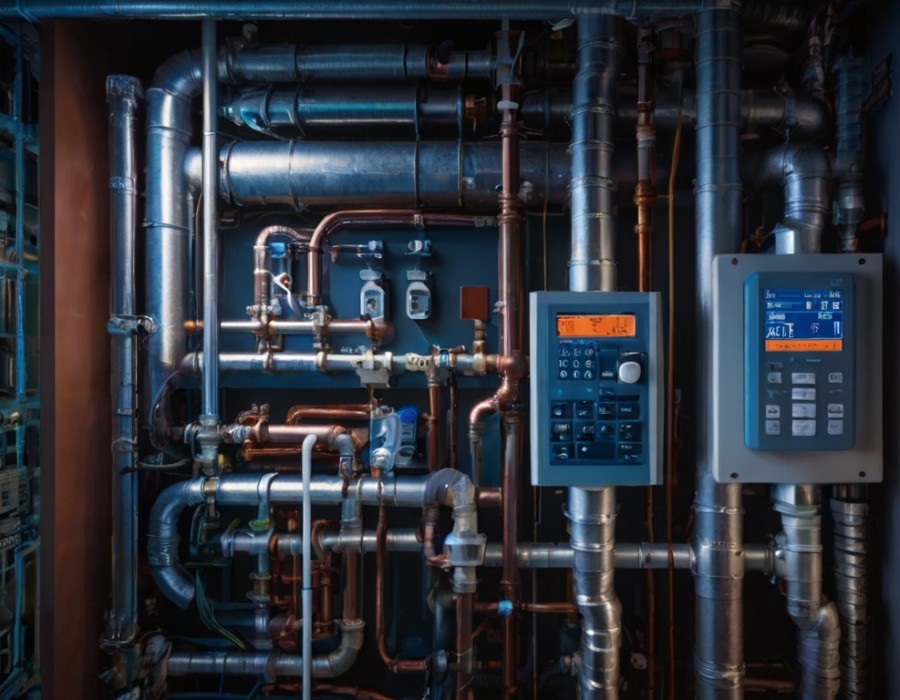In HVAC (Heating, Ventilation, and Air Conditioning) systems, accurately determining the properties of mixed air streams is crucial for energy efficiency, indoor air quality, and system performance. A Mixed Air Calculator is a valuable tool that helps engineers, technicians, and HVAC professionals calculate the resulting temperature, humidity, and other properties when two or more air streams combine.
This article explores the importance of mixed air calculations, how a Mixed Air Calculator works, and its applications in HVAC design and operation.
What is a Mixed Air Calculator?
A Mixed Air Calculator is a computational tool (either software-based or manual) that determines the properties of air resulting from mixing two or more air streams with different temperatures, humidity levels, or flow rates. The calculator uses fundamental thermodynamic principles to provide accurate results, ensuring optimal HVAC system performance.
Key Parameters Calculated:
- Dry-Bulb Temperature – The sensible heat component of the mixed air.
- Humidity Ratio (or Specific Humidity) – The moisture content in the mixed air.
- Enthalpy – The total energy (sensible + latent heat) of the mixed air.
- Relative Humidity – The percentage of moisture in the air compared to its maximum capacity at a given temperature.
Why is Mixed Air Calculation Important?
- Energy Efficiency
- Properly mixed air reduces the load on heating and cooling systems, saving energy.
- Helps in optimizing economizer cycles in HVAC systems by determining when outdoor air can be used for free cooling.
- Indoor Air Quality (IAQ)
- Ensures the right balance of fresh outdoor air and recirculated air, maintaining healthy ventilation rates.
- System Performance & Comfort
- Prevents issues like uneven temperatures or excessive humidity by ensuring proper air mixing before conditioning.
- Cost Savings
- Reduces unnecessary heating/cooling by accurately predicting mixed air conditions, lowering operational costs.
How Does a Mixed Air Calculator Work?
The calculator uses the Mixing of Two Air Streams Principle, based on mass and energy balance equations:
Basic Equations:
- Mass Flow Balance:
- m˙1+m˙2=m˙mix
- m˙1+m˙2=m˙mix
- (Where m˙m˙ = mass flow rate of air)
- Energy Balance (Enthalpy):
- m˙1⋅h1+m˙2⋅h2=m˙mix⋅hmix
- m˙1⋅h1+m˙2⋅h2=m˙mix⋅hmix
- (Where hh = enthalpy of air)
- Humidity Ratio Balance:
- m˙1⋅W1+m˙2⋅W2=m˙mix⋅Wmix
- m˙1⋅W1+m˙2⋅W2=m˙mix⋅Wmix
- (Where WW = humidity ratio)
Step-by-Step Calculation Example:
Suppose we mix two air streams:
- Air Stream 1: 1000 CFM, 80°F, 50% RH
- Air Stream 2: 500 CFM, 60°F, 70% RH
- Convert CFM to mass flow rate (using air density).
- Calculate enthalpy & humidity ratio for each stream using psychrometric charts or equations.
- Apply mixing equations to find the resulting temperature, humidity, and enthalpy.
- Determine final mixed air properties.
(Note: A digital Mixed Air Calculator automates these steps for quick results.)
Applications of a Mixed Air Calculator
- HVAC System Design
- Helps size equipment correctly by predicting mixed air conditions before heating/cooling.
- Air Handling Units (AHUs) & Economizers
- Determines optimal outdoor air intake for ventilation and free cooling.
- Laboratory & Cleanroom Ventilation
- Ensures precise air mixing for controlled environments.
- Industrial Processes
- Used in drying, cooling, and ventilation applications where air mixing affects product quality.
- Energy Audits & Retrofits
- Evaluates existing HVAC systems for potential energy-saving improvements.
Conclusion
A Mixed Air Calculator is an essential tool for HVAC professionals, ensuring efficient and accurate air mixing calculations. Whether designing new systems, optimizing existing ones, or improving indoor air quality, understanding mixed air properties leads to better performance, energy savings, and occupant comfort.





Comments